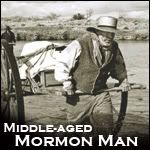Bee Keeping as a Homeschool Project
(next year)
"I never thought that I would see
the day I was happy to meet a bee."--Me
Anyone besides me concerned about the bees? Honey shortage? I have been thinking about bee keeping for a while, taking an interest. My family enjoys gardening and we're noticing the shortage of bees. I get excited when I see one flying around my vegetable plants!
I've also been interested in bee keeping for the preparedness factor--Honey storage
I happened up some books in the library without really looking for them and thought,"Cool."
But where do I get supplies? I am a Child of Northeast Coast Surburbia living in Toad Suck, Arkansas for pete's sake! (real place, honest!) As far as I am concerned milk comes from a jug and eggs come from a carton.
Mason Bees and various supplies
Canned Bees Starter Kit
What I learned from the Territorial Seed catalog alone is:
"You have probably heard of the recent plight of the honey bee. Now there is hope for home fruit crops in the blue orchard bee, or as it is more commonly called, orchard mason bee. The orchard mason bee has become a helpful ally in the search for an effective fruit tree polinator. To maximize the numer of bees for the most effective pollination, attention should be given to the depth of the home. When the orchard mason bee lays eggs that will hatch the following spring, it lays female eggs towards the back in each liner and male eggs towards the front of the liner. Too narrow and or too shallow of a liner has the tendency to produce mostly male bees. Our Nester and Canned Bees Starter Kit have nesting tubes which consist of a liner, guard tube, and plastic end plug. The liners and guard tubes are the recommended diameter and depth.
Each spring when the bees emerge and begin nesting, remove the used liners and replace with new liners. In late September, remove the container to a cool location for hibernation. You can remove the now-filled liners and either refrigerate them or place in a cardboard box insulated with newspaper and store in an unheated outbuilding. Hibernation at 38 degrees is perfect. Put the bees out again in the early spring, just before blossoms break." Cool.
Here are a list of questions I want to find out about:
I've also been interested in bee keeping for the preparedness factor--Honey storage
(60 lbs/person/year). "But, how do I get started," I wondered? I didn't know any bee keepers, just saw them in movies, you know, the Bee Charmer from "Fried Green Tomatoes," and read about the bee keeping women in "The Secret Life of Bees."
I happened up some books in the library without really looking for them and thought,"Cool."
But where do I get supplies? I am a Child of Northeast Coast Surburbia living in Toad Suck, Arkansas for pete's sake! (real place, honest!) As far as I am concerned milk comes from a jug and eggs come from a carton.
Well, the Lord answers prayers and interests without our even knowing it. I think He was trying to tell me something, as I happened to request a certain catalog online Territorial Seed Company, while looking for something else, and when the catalog arrived, Ta Dah!! I found Bee and Bee Supplies!!!
Canned Bees Starter Kit
The Orchard Mason Bee book
Unfortunately, I missed the "order by" date for shipping this year (Feb 1), so we will do it next year. I plan to start learning about it. Good homeschool project, I think.
What I learned from the Territorial Seed catalog alone is:
"You have probably heard of the recent plight of the honey bee. Now there is hope for home fruit crops in the blue orchard bee, or as it is more commonly called, orchard mason bee. The orchard mason bee has become a helpful ally in the search for an effective fruit tree polinator. To maximize the numer of bees for the most effective pollination, attention should be given to the depth of the home. When the orchard mason bee lays eggs that will hatch the following spring, it lays female eggs towards the back in each liner and male eggs towards the front of the liner. Too narrow and or too shallow of a liner has the tendency to produce mostly male bees. Our Nester and Canned Bees Starter Kit have nesting tubes which consist of a liner, guard tube, and plastic end plug. The liners and guard tubes are the recommended diameter and depth.
Each spring when the bees emerge and begin nesting, remove the used liners and replace with new liners. In late September, remove the container to a cool location for hibernation. You can remove the now-filled liners and either refrigerate them or place in a cardboard box insulated with newspaper and store in an unheated outbuilding. Hibernation at 38 degrees is perfect. Put the bees out again in the early spring, just before blossoms break." Cool.
Here are a list of questions I want to find out about:
Are these Mason Bees good honey producers?
- Do I need more than a Bee Nest to collect honey?
- Do I need to build Bee Houses?
- How many bees are recommended for honey production?
- Wow, could I even start a home business?
- Wouldn't that be a cool education for the ganglings? I am now going online and look for information. I have 11 months to learn a thing or two.
Googled Bees for Sale and this is what happened. Hoo-yah!! Here I go...








No comments:
Post a Comment